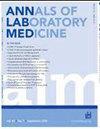Optimization of Natural Killer Cell Expansion with K562-mbIL-18/-21 Feeder Cells and Assurance of Feeder Cell-free Products.
IF 3.9
2区 医学
Q1 MEDICAL LABORATORY TECHNOLOGY
引用次数: 0
Abstract
Background Cancer cell line-derived feeder cells enhance natural killer (NK) cell expansion; however, concerns regarding viable residual feeder cells in the final product limit their use. Evidence supporting the safety of NK-sensitive K562-based feeders, even when irradiated, is scarce. We optimized an NK cell expansion protocol using genetically engineered K562-mbIL-18/-21 (GE-K562) feeder cells and clinical-grade media and confirmed the absence of residual feeder cells. Methods NK cell expansion efficiency was compared between feeder-free and feeder-based systems using CTS NK-Xpander Medium. To achieve optimal NK expansion, various peripheral blood mononuclear cell (PBMC)-to-feeder ratios and re-stimulation frequencies were tested over 21 days. Flow cytometry and BCR::ABL1 quantitative reverse transcription PCR (RT-qPCR) were used to confirm the absence of feeder cells in the final NK cell product. Results Feeder-based systems showed superior NK cell fold expansion compared with that of feeder-free systems. Among feeder-based conditions, NK cells expanded 5,224-fold at a 2:1 PBMC-to-feeder ratio after 3 weeks, relative to 1,450-fold at a 6:1 ratio (P <0.05). Re-stimulation on days 7 and 14 further increased expansion up to 261,457-fold. Irradiated feeder cells showed no proliferation and were eliminated within 3-6 days. On day 21, flow cytometry and BCR::ABL1 RT-qPCR results confirmed the absence of residual feeder cells. Conclusions Our optimized NK cell expansion protocol using irradiated GE-K562 feeder cells and clinical-grade media offers a safe and scalable approach to generating large numbers of NK cells, supporting its potential use in clinical immunotherapy applications.K562-mbIL-18/-21喂料细胞自然杀伤细胞扩增的优化及无喂料细胞产物的保证
肿瘤细胞系来源的饲养细胞增强自然杀伤细胞(NK)的扩增;然而,对最终产品中残留的饲养细胞的担忧限制了它们的使用。支持对nk敏感的基于k562的喂食器的安全性的证据,即使经过辐照,也很少。我们使用基因工程K562-mbIL-18/-21 (GE-K562)饲养细胞和临床级培养基优化了NK细胞扩增方案,并证实没有残留的饲养细胞。方法采用CTS nk - expander培养基,比较无投料系统和有投料系统的snk细胞扩增效率。为了达到最佳NK扩增,在21天内测试了不同的外周血单核细胞(PBMC)与饲料的比例和再刺激频率。用流式细胞术和BCR::ABL1定量反转录PCR (RT-qPCR)证实最终NK细胞产物中不存在饲养细胞。结果加料系统的NK细胞折叠扩增率高于无加料系统。在以饲料为基础的条件下,在2:1的pbmc与饲料比例下,NK细胞在3周后扩增5,224倍,而在6:1的比例下扩增1,450倍(P <0.05)。第7天和第14天的再次刺激进一步增加了膨胀,达到261,457倍。辐照后的饲养细胞无增殖,3-6天内消失。第21天,流式细胞术和BCR::ABL1 RT-qPCR结果证实没有残留的饲养细胞。结论采用辐照的GE-K562饲养细胞和临床级培养基进行NK细胞扩增,是一种安全、可扩展的大量NK细胞扩增方法,支持其在临床免疫治疗中的潜在应用。
本文章由计算机程序翻译,如有差异,请以英文原文为准。
求助全文
约1分钟内获得全文
求助全文
来源期刊

Annals of Laboratory Medicine
MEDICAL LABORATORY TECHNOLOGY-
CiteScore
8.30
自引率
12.20%
发文量
100
审稿时长
6-12 weeks
期刊介绍:
Annals of Laboratory Medicine is the official journal of Korean Society for Laboratory Medicine. The journal title has been recently changed from the Korean Journal of Laboratory Medicine (ISSN, 1598-6535) from the January issue of 2012. The JCR 2017 Impact factor of Ann Lab Med was 1.916.
 求助内容:
求助内容: 应助结果提醒方式:
应助结果提醒方式:


